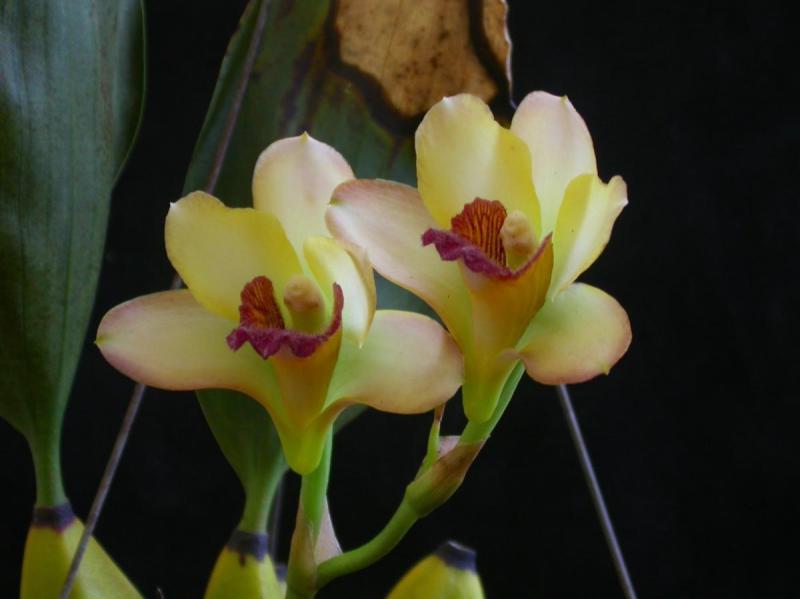Bifrenaria harrisoniae
Also known as: Harrison's Bifrenaria or Bifrenaria harrisoniae h.v. pubijera Bifrenaria harrisoniae h.f. purpurescens Bifrenaria harrisoniae h.f. aurea Maxillaria pubigera Maxillaria spathacea Bifrenaria harrisoniae var. alba-plena Bifrenaria harrisoniae f. alba-plena Colax grandiflorus Bifrenaria harrisoniae var. typica Bifrenaria harrisoniae var. citrina Bifrenaria harrisoniae var. minor Bifrenaria harrisoniae var. eburnea Bifrenaria harrisoniae var. glabra Bifrenaria harrisoniae var. angustior Bifrenaria harrisoniae var. insularis Bifrenaria harrisoniae var. purpurascens Lycaste harrisoniae var. alba Bifrenaria tyrianthina var. albescens Bifrenaria harrisoniae var. flavopurpurea Bifrenaria harrisoniae var. buchananiana Bifrenaria harrisoniae var. grandiflora Bifrenaria harrisoniae var. alba Bifrenaria aurea Bifrenaria harrisoniae var. pubigera Lycaste harrisoniae var. eburnea Maxillaria harrisoniae var. alba Maxillaria harrisoniae var. angustior Maxillaria harrisoniae var. eburnea Lycaste citrina Maxillaria barringtoniae Maxillaria harrisoniae var. grandiflora in the subfamily: Epidendroideae
Native to: Brazil
General Information
Harrison's Bifrenaria is a cool to warm growing epiphytic orchid belonging to the sub family Epidendroideae native to Brazil. It is named after the Mrs. Arnold Harrison, English Orchid Enthusaist in the 19th century.
Plant Description
Grows to 25-41cm. Each new growth has a single oblong shaped leaf that grows to 13-31cm long. Pseudobulbs grow to 5-9cm
Flowers
Numerous long lasting, fragrant blossoms appear
Fragrance
The orchid is fragrant.
Substrate(s)
- Bark
- Spaghnum Moss
- Perlite
Care Notes
These orchids have a fine root system that can quickly die back if left dry for too long, but also does not like to be kept wet, so water regularly but ensure that the mix is dry before watering.
Fragrant:- IsFragrant
Climate
Grows at low to high elevations. Rainfall ranges from 41mm to 137mm per day, heaviest in June and lightest in January. Humidity ranges from 74% to 81%, highest in September and lowest in July. Temperature ranges from 14C to 27C, highest in August (20C to 27C) and lowest in January (14C to 21C).
Fertiliser
Apply liquid based fertiliser per recommended directions. They can benefit from a high phosphate fertiliser leading up to flowering season, followed by a high nitrogen fertiliser when new growth appears, and a balanced fertiliser in other times. These orchids can also tolerate slow release fertiliser applied 1-2 pellets per cup (250ml) of media.
Use balanced fertiliser year round. Be sure to flush out excess fertiliser by running water through the media regularly year round. Apply fertiliser regularly at half strength year round.Potting
These plants are quite forgiving and will do well repotted ever 2-3 years. The mix should be coarse, well draining, and allow space for air to move and for roots to grow.
Alternatively, these plants will also do well mounted to tree fern or cork slabs, or mounted to trees.
Best time for repotting or mounting the orchids is the end of winter when new growths start to appear. Avoid repotting during hot weather,
This plant does well mounted.






















